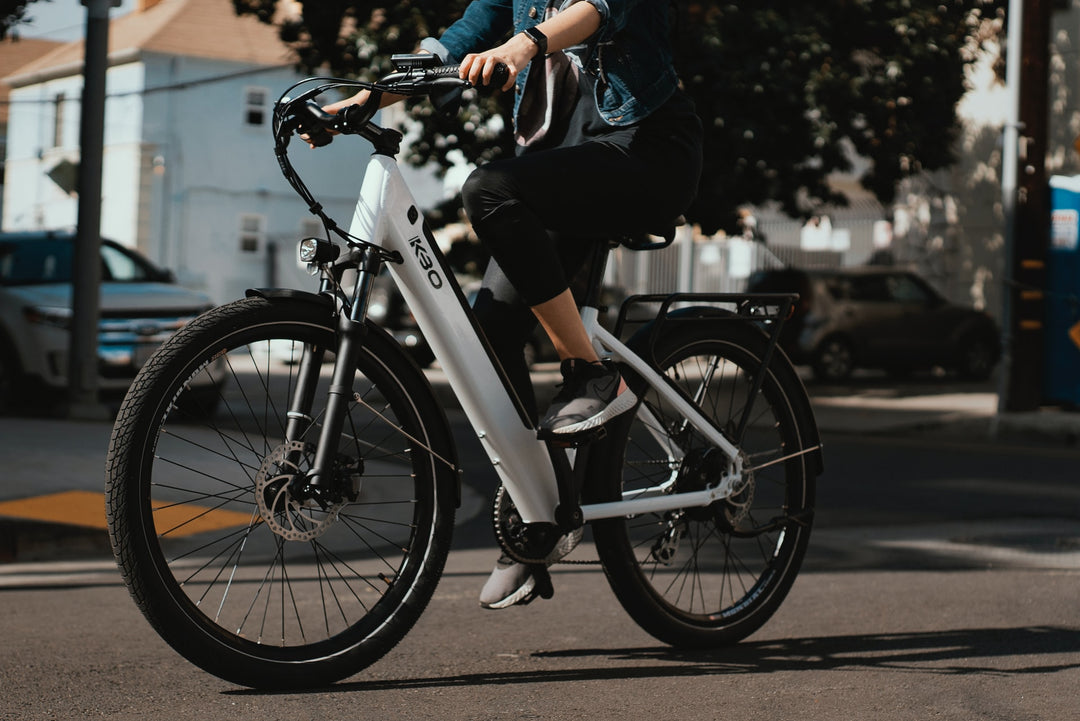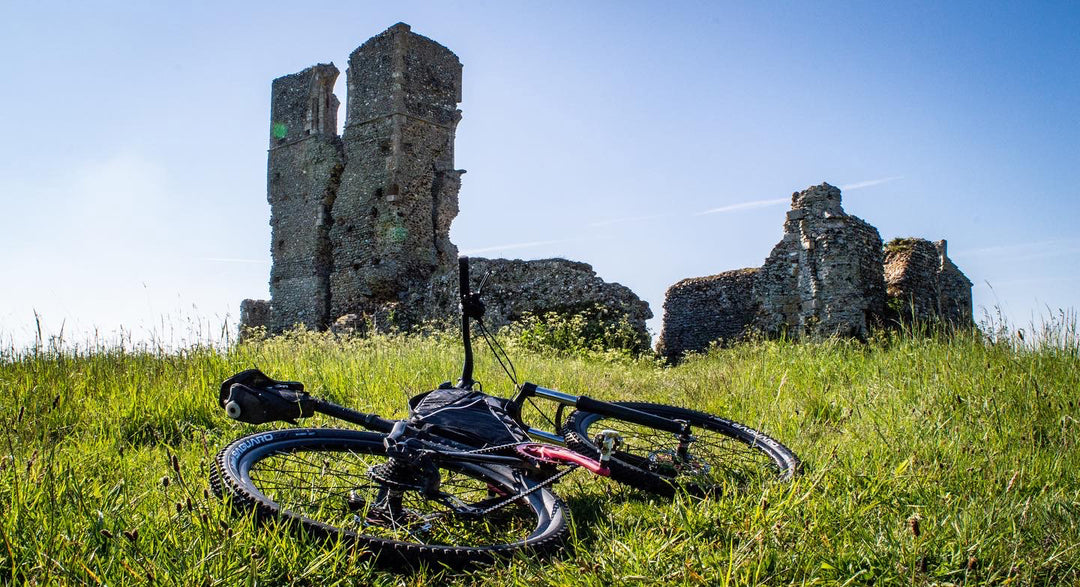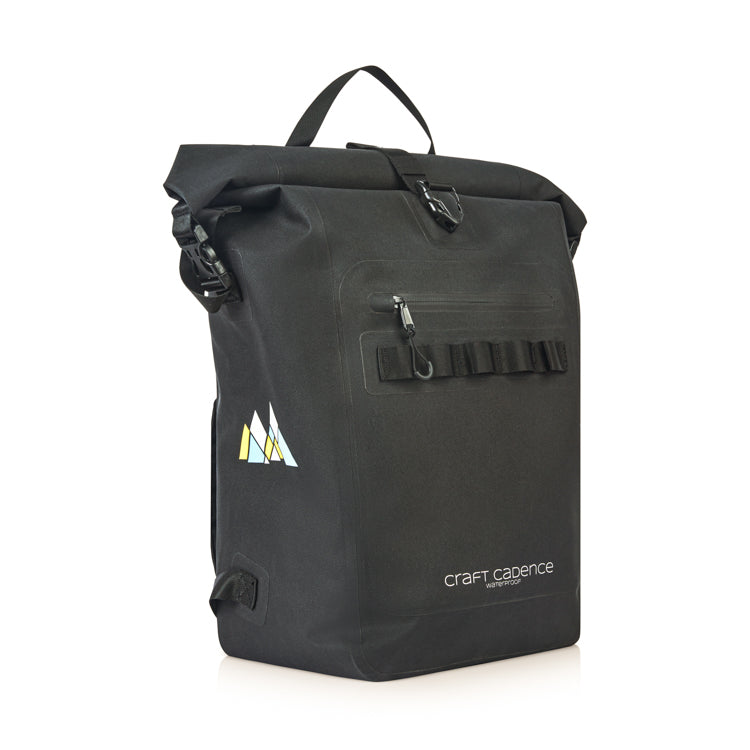The essential guide to choosing bicycle locks for your commute
So you have got your new bike, and all set to get out there and eat up the miles. But don’t forget, you are most likely going to need a lock too. With lots of different types and styles it might be hard to know what suits your needs. Well this guide should help you make your selection, as we evaluate each one.
Aka U-locks or shackle locks, they are the traditional security measure for bikes.They can be used to lock a frame to a non-moveable object or to secure wheels/panniers to the frame. A D-lock is a solid metal loop which locks to a metal lock mechanism. Therefore they are not flexible and can be pretty heavy. They are regarded as the most durable and secure lock available; hard to break without attracting attention as the lock mechanism itself will resist a range of attacks from hammers, chisels and other picking tools. The D shape prevents leverage style attacks that cable and lower grade chain locks are susceptible to.
They are the best option if you leave your bicycle in public places and for long durations. They are available in a range of lengths and weight to suit your needs.
Recommended
Kryptonite Keeper 12 – well priced, light, silver sold secure.
Abus Granit X-Plus 540 - maximum gold sold secure, heavy. Industry leader in security.
As the name suggests a chain lock is an anodised steel chain that is often wrapped with a plastic sleeve to make it manageable to handle, not scratch your machine and protected from the elements. Longer and more flexible than D-Locks, these are a great compromise between versatility and security. With a long chain you can lock both the frame and wheels easily to a wider variety of objects, such as thick lampposts or trees, which a D-lock may not be able to. Chain locks are not as sturdy as a D-lock, but they are stronger than cable options.
Ideal if you leave your bike in pubic but need a lighter transportable lock or have to lock up to difficult objects.
Recommended
Oxford Chain 8 -Well prices, long chain with thick links.Silver sold secure.
Abus City Chain Plus 1010 - Heavy duty links and gold sold secure.
Cable locks are constructed of intertwined metal fibres covered, again wrapped in. They can be very long, and the most versatile, being able to wrap around virtually any object. Very lightweight and easy to transport. The trade-off is that they're the least secure and are easily defeated with a pair of bolt cutters. Thicker cables and hardened steel construction are best for added strength.
Cable locks are perfect for that quick stop off at the coffee shop or if you bike if not very valuable / desirable. Anything else, don’t go for this.
Recommended
Squire Combination Operated Cablelock - well priced and long length of cable. Bronze sold secure.
Abus Centuro 860 - Thick hardened steel cable. Bronze sold secure.
In the UK there is the security rating system. When looking at bike locks online or in a shop look out for the logo and term 'Sold Secure'. This is a third party independent rating system used to ensure the quality of a lock. An approved lock is graded as Gold, Silver or Bronze. The rating is chosen by how long it takes to break the lock and the tools needed to break it.
Gold offers the best protection, Silver is a compromise between price and protection and Bronze protection against only opportunistic thieves. Any lock at a minimum should be bronze and don’t be tempted to buy one without a rating. If you have bicycle insurance, then often you will be required to use a Sold Secure lock.
You will need to carry a lock around with you, and any additional weight on the bike equals additional effort. Usually a stronger bike lock will also be heavier. It may be worth getting one which comes with a mounting bracket, so the lock sits on your frame. Or you could put it in panniers. We do not recommend you attach it to your handle bars as it could interfere with your braking.
We also recommend that you have a secondary lock. Having two different types of lock means a thief will need different tools to free your bike. There is still the chance of it being stolen, but a thief would be put off if there are other easier targets. Also, if you have quick reseals wheels you may want to invest in lock on skewers, which means they cannot be taken off easily.
As the cycling world evolves so do locks. The most recent innovation is the use to Bluetooth and wireless technology in the traditional lock. Bluetooth locks work via your phone, removing the need for keys or combinations. The locks can track cycling habits, by measuring several cycling aspects like trip duration, length and number of calories burnt, and also log when the lock is being used.
Other locks feature geotagging which remembers where you last parked your bike (perhaps handy after a late night out…).While these are yet to take off, it certainly points towards where lock technology is heading.
Cover Photo by Thomas Hawk/ CC BY
Types of locks
D-Locks
Aka U-locks or shackle locks, they are the traditional security measure for bikes.They can be used to lock a frame to a non-moveable object or to secure wheels/panniers to the frame. A D-lock is a solid metal loop which locks to a metal lock mechanism. Therefore they are not flexible and can be pretty heavy. They are regarded as the most durable and secure lock available; hard to break without attracting attention as the lock mechanism itself will resist a range of attacks from hammers, chisels and other picking tools. The D shape prevents leverage style attacks that cable and lower grade chain locks are susceptible to.
They are the best option if you leave your bicycle in public places and for long durations. They are available in a range of lengths and weight to suit your needs.
Recommended
Kryptonite Keeper 12 – well priced, light, silver sold secure.
Abus Granit X-Plus 540 - maximum gold sold secure, heavy. Industry leader in security.
Chain Locks
As the name suggests a chain lock is an anodised steel chain that is often wrapped with a plastic sleeve to make it manageable to handle, not scratch your machine and protected from the elements. Longer and more flexible than D-Locks, these are a great compromise between versatility and security. With a long chain you can lock both the frame and wheels easily to a wider variety of objects, such as thick lampposts or trees, which a D-lock may not be able to. Chain locks are not as sturdy as a D-lock, but they are stronger than cable options.
Ideal if you leave your bike in pubic but need a lighter transportable lock or have to lock up to difficult objects.
Recommended
Oxford Chain 8 -Well prices, long chain with thick links.Silver sold secure.
Abus City Chain Plus 1010 - Heavy duty links and gold sold secure.
Cable Locks
Cable locks are constructed of intertwined metal fibres covered, again wrapped in. They can be very long, and the most versatile, being able to wrap around virtually any object. Very lightweight and easy to transport. The trade-off is that they're the least secure and are easily defeated with a pair of bolt cutters. Thicker cables and hardened steel construction are best for added strength.
Cable locks are perfect for that quick stop off at the coffee shop or if you bike if not very valuable / desirable. Anything else, don’t go for this.
Recommended
Squire Combination Operated Cablelock - well priced and long length of cable. Bronze sold secure.
Abus Centuro 860 - Thick hardened steel cable. Bronze sold secure.
Things to consider when purchasing locks
Security rating
In the UK there is the security rating system. When looking at bike locks online or in a shop look out for the logo and term 'Sold Secure'. This is a third party independent rating system used to ensure the quality of a lock. An approved lock is graded as Gold, Silver or Bronze. The rating is chosen by how long it takes to break the lock and the tools needed to break it.
Gold offers the best protection, Silver is a compromise between price and protection and Bronze protection against only opportunistic thieves. Any lock at a minimum should be bronze and don’t be tempted to buy one without a rating. If you have bicycle insurance, then often you will be required to use a Sold Secure lock.
Weight
You will need to carry a lock around with you, and any additional weight on the bike equals additional effort. Usually a stronger bike lock will also be heavier. It may be worth getting one which comes with a mounting bracket, so the lock sits on your frame. Or you could put it in panniers. We do not recommend you attach it to your handle bars as it could interfere with your braking.
Secondary bike locks
We also recommend that you have a secondary lock. Having two different types of lock means a thief will need different tools to free your bike. There is still the chance of it being stolen, but a thief would be put off if there are other easier targets. Also, if you have quick reseals wheels you may want to invest in lock on skewers, which means they cannot be taken off easily.
Smart Locks
As the cycling world evolves so do locks. The most recent innovation is the use to Bluetooth and wireless technology in the traditional lock. Bluetooth locks work via your phone, removing the need for keys or combinations. The locks can track cycling habits, by measuring several cycling aspects like trip duration, length and number of calories burnt, and also log when the lock is being used.
Other locks feature geotagging which remembers where you last parked your bike (perhaps handy after a late night out…).While these are yet to take off, it certainly points towards where lock technology is heading.
Cover Photo by Thomas Hawk/ CC BY



